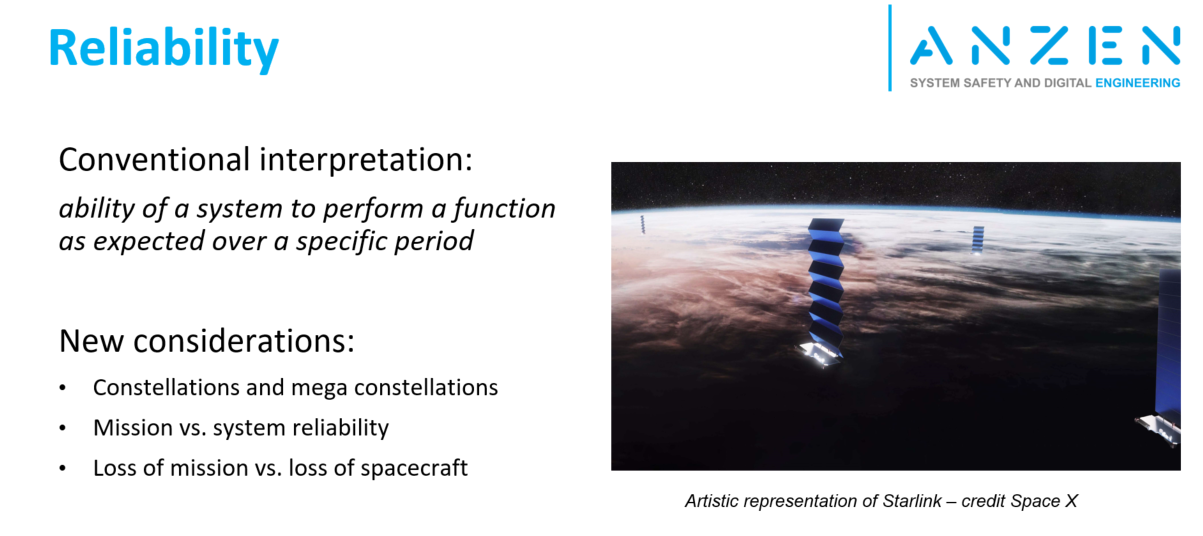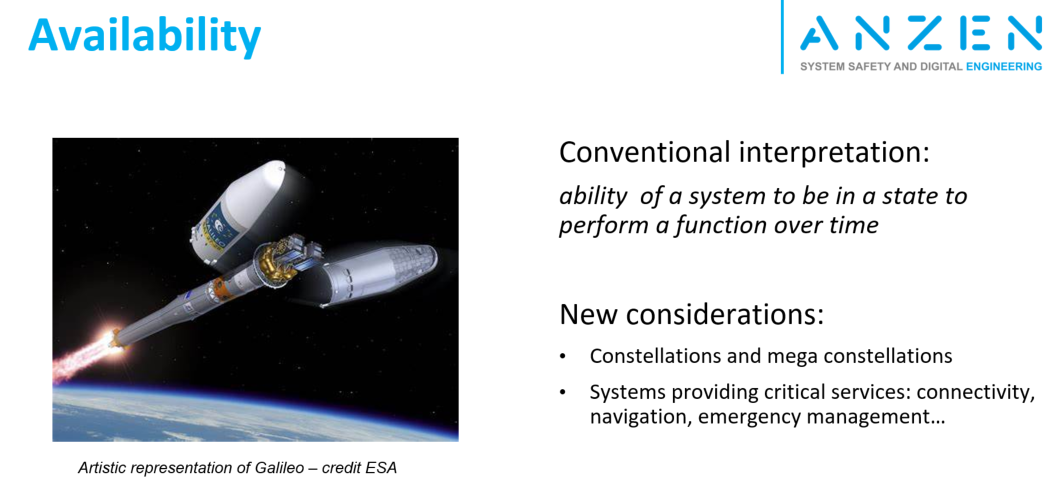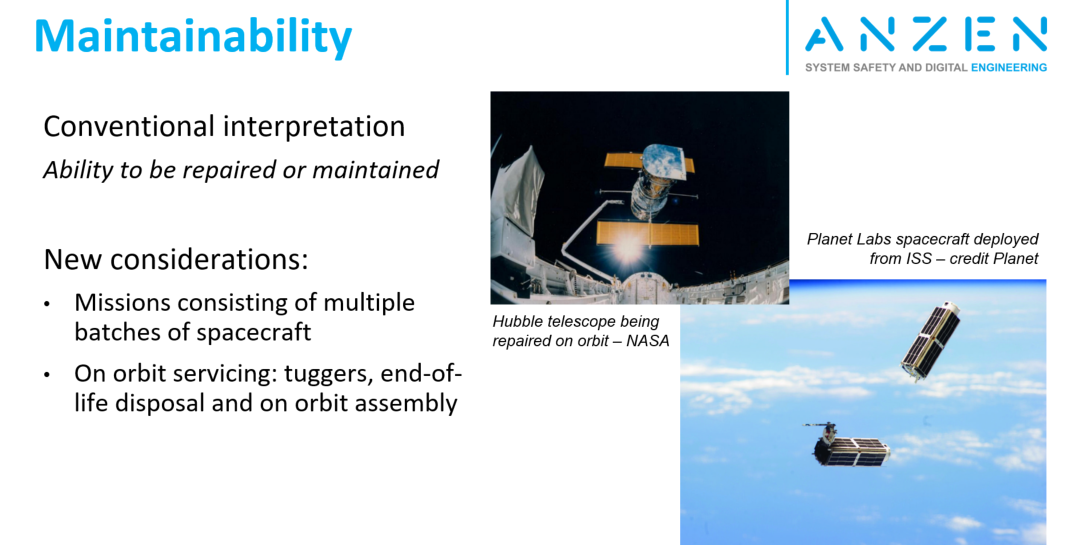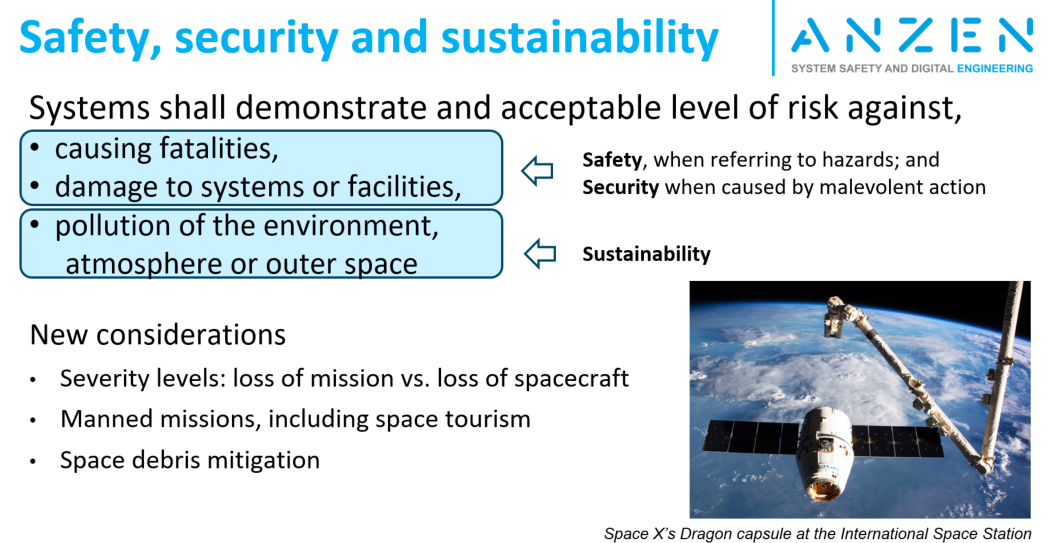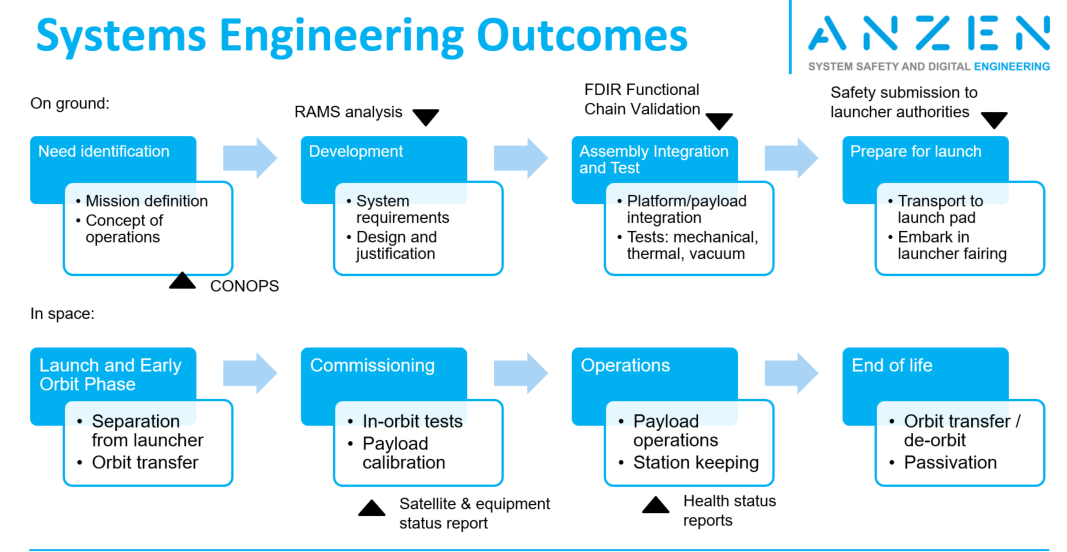This work was originally presented at the V Congress of Space Engineering and was further developed in a dedicated webinar hosted by AEIS, the Spanish Chapter of INCOSE.
By Pablo López Negro
Emerging challenges in systems engineering and RAMS in upcoming space missions (AI4SE)
In recent years we have been witnessing a new space revolution. This revolution is being driven by the emergence of new technologies, the reduction of entry barriers to space (especially with regard to launch costs) and the proliferation of new products and services that use the space environment. Taking into account all of the above, new mission concepts based on manned flights, mega-constellations, in-orbit services, microsatellites, etc., are emerging and consolidating, changing the paradigm with respect to conventional systems.
This article explores these new trends from the point of view of systems engineering and RAMS (reliability, availability, maintenance and security); listing the new emerging challenges in the current context of the space sector.
Systems engineering and RAMS
RAMS stands for Reliability, Availability, Maintainability and Safety
Conventional space missions based on geostationary satellites typically lasted 15 years. This posed a challenge for the reliability of the systems, with reliability being understood as the ability of the system to function correctly during a certain period of time. This resulted in demanding conditions at the equipment level (selection of materials, manufacturing processes, technologies) and at the system level (redundancies).
In the new context, and particularly with the emergence of New Space, many of these requirements have been relaxed, favoring the production of satellites with much lower unit costs, but typically with shorter operational durations. In addition to new technological considerations, the current commercial context and new mission concepts (generally more short-term, taking into account the rapid technological development that makes it difficult to consolidate 15-year plans as in the past) have replaced the typical interpretation of reliability at the satellite level with a global interpretation at the mission level; taking into account the multiple satellites that can be part of the system (constellation) or the possibility of progressively replacing these satellites over time.
In terms of availability, space missions have gone from providing a service with high added value but not critical for society (for example, scientific missions, space exploration; or commercial, broadcasting live events), to new missions where the service must be guaranteed with a very high level of reliability. Typically, in the former, an interruption of service was annoying and could lead to financial losses, but it was not dangerous. However, the new missions offer services such as connectivity or global positioning that today are essential for the operation of other products and services on the ground. The archetypal example is the Galileo constellation, which offers high-precision positioning and navigation services and is used, among others, for the automatic landing of commercial aircraft. This means that the service cannot be interrupted or disturbed, since the conditions in the event of disruption could be critical for users.
In the coming years, it will be common to find missions that must guarantee a high level of service and this will have an impact both on the design of the system (selection of components, redundancies, automatic reconfiguration on board…), and on the overall mission (number of satellites, ground infrastructure, concept of operations…).
Except in very specific cases such as the International Space Station or the Hubble Space Telescope, maintainability has not been a common concern for space missions (at least not at the satellite level). This is changing in recent years with several significant trends:
- On the one hand, the new reusable launchers.
- On the other hand, mission concepts based on constellations with periodic satellite replacement (the best known examples are Planet or Starlink, and in the coming years there will be many more with the new microsatellite constellations).
- Finally, advances in on-orbit servicing, currently including satellite life extension kits and in the future even cases of in-orbit repair or replacement of payloads and assembly in orbit can be covered.
In terms of the safety of space operations, in addition to the challenges for new manned missions (both conventional missions to the International Space Station, new initiatives to return to the Moon, or space tourism in the upper layers of the stratosphere), two new challenges should be highlighted:
- Security in terms of protection against threats (safety covers protection against failures while security deals with malevolent external interventions). Especially relevant these days is cybersecurity both at the level of service protection and at the level of satellite control.
- Sustainability taking into account the growing number of objects in orbit and the need to ensure that the space environment will remain usable in the coming decades, new regulations are being consolidated that require deorbit at the end of the operational life of satellites and new services for monitoring objects in orbit, predicting trajectories and warning in the event of collisions.
For all of the above, two different levels of severity are established in cases of serious failures: on the one hand, failures that lead to the loss of the mission (failure in the payload, or failure in the platform that makes it impossible to use the payload normally or that leads to a significant loss of performance); and on the other hand, the loss of the satellite, a total loss of control of it that makes it impossible not only to continue with the mission, but also to deorbit the satellite or minimally control its trajectory to prevent it from becoming a danger to other satellites.
Available solutions and emerging technologies
Taking into account all of the above, work is being done on technological and design solutions that improve the reliability of new satellites and space missions. The presentation discusses the main lines of action, both at the level of on-board components and equipment and at the level of mission design, ground infrastructure and concept of operations.
-> Link to full recording of AEIS webinar
Do you want to know more? Keep updated for new articles about systems safety and dependability analysis or contact us for more information.
 | Head of Innovation at Anzen Aerospace Engineering |
Aerospace engineer specialized in systems engineering, space mission design and operations, avionics and attitude and orbit control system of spacecraft.
Participation in commercial missions (Spacebus Neo, telecommunications), institutional (Meteosat Third Generation, Earth observation; ARIEL, space exploration) and research projects (EROSS, which targeted futuristic applications including on-orbit rendez-vous and on-orbit servicing).
Since 2022 he took in charge the Model-Based Systems Engineering (MBSE) and Model-Based Safety Analysis (MBSA) activities in Anzen Aerospace Engineering.
